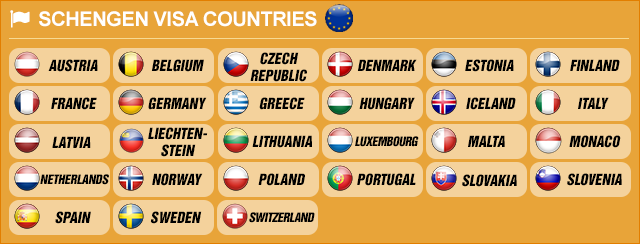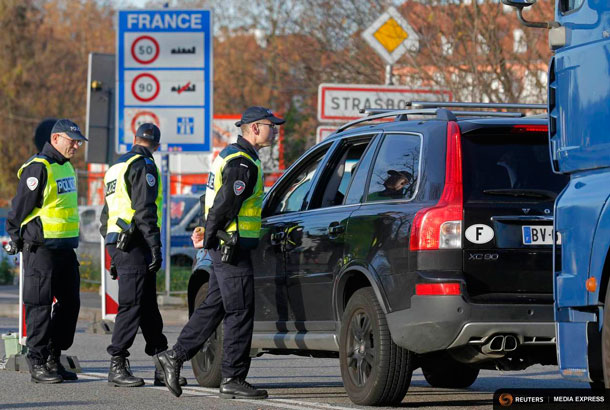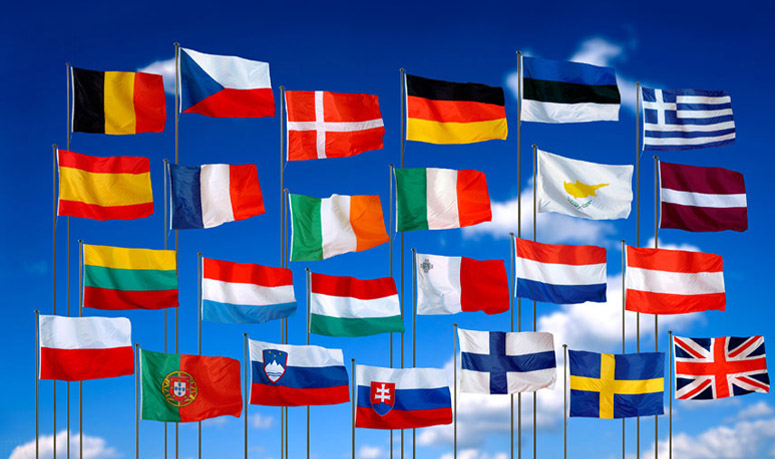(Editor’s note: This post has been updated with information about the new European Travel Information and Authorisation System, or ETIAS.)
It may come as a surprise to you that you can’t just hop on a plane and spend a year in Europe. At least not most of Europe, especially those countries in the Schengen Area.
 Unless you’re an international student. Or you have a residence permit.
Unless you’re an international student. Or you have a residence permit.
But you can stay in Denmark for an additional 90 days if you’re an American. And Aussies between the ages of 18 and 30 can stay for a year in Italy on a working holiday visa.
Croatia is in Europe, but has its own 90-day policy.
And no one knows what will happen after Brexit.
Are you confused yet?
So was I.
But after many, many hours perusing the Internet, I can finally say that I understand the rules that govern how much time you can spend in Europe as a tourist. And all the loopholes.
First, a caveat: I’m not a lawyer.
So if you choose to read on, you can’t take anything I say as legally binding. It is the result of hours of research, but laws change, extenuating circumstances exist, and I can’t possibly take into account all of the variables that make up your particular situation.
Now that you’re read the fine print, here’s what you need to know about the Schengen Agreement:
Its main purpose is to standardize visa policies and eliminate internal border control between European countries.
Originally signed in 1985 by five members of the European Economic Union near the city of Schengen (hence the name) in Luxembourg, it was later incorporated into European Union law.
Only the United Kingdom and the Republic of Ireland were allowed to opt out because they hadn’t signed the agreement at the time this occurred. So basically, a legal loophole.
Once the United Kingdom opted out (because, well, they’re the United Kingdom and they like to do things their own way), the Republic of Ireland chose to do so as well in order to keep the border between them and Northern Ireland open under agreements that governed the Common Travel Area.
To make this all even more confusing, there are now four non-EU countries that are parties to the agreement (Iceland, Norway, Switzerland and Liechtenstein) and four EU countries that are not part of the agreement (Cyprus, Romania, Croatia, and Bulgaria). The latter four countries are legally obligated to join the Schengen Area once they have met certain technical and legal requirements.
Sounds like a nightmarish Venn diagram problem, doesn’t it?
The gist of all this is that the members of the Schengen Agreement operate “like a single state for international travel purposes with external border controls for travellers entering and exiting the area, and common visas, but with no internal border controls.” (Wikipedia)
There’s an exception to every rule.

Remember that “no internal border controls” rule?
Well, according to the Schengen Borders Code, member states can temporarily reintroduce border controls when they determine that “a serious threat to public policy or internal security” exists (European Commission – Migration and Home Affairs).
At the time of this writing, five countries have re-instituted border controls with their neighbors; France for “persistent terrorist threats;” and Germany, Austria, Denmark, Sweden, and Norway for immigration issues. There may not be internal border controls, but there are strict external border controls
The Schengen Agreement allows citizens of its members states as well as foreigners with valid resident permits for any of the countries in the Schengen Area to travel freely across internal borders. With the exception of those borders listed in the previous paragraph, of course.
But citizens, residents, and tourists alike are subject to strict external border controls on the way into the Schengen Area and on the way out. These border checks serve to make sure the criminal element is kept out, immigration policies and procedures are being followed, and tourists don’t overstay their welcome.
The amount of time tourists can stay in the Schengen Area is limited.
Tourists can only stay in the Schengen Area for 90 out of every 180 days. Seems simple, right?
It would be if it weren’t for all the exceptions to this rule and the fact that there were two interpretations of how to calculate the number of days. Did a tourist have to leave for 90 full days or could they do a border run to a country outside of the Schengen Area to “reset the clock” and begin another 90 days immediately? The rule has now been made crystal clear.
Tourists can only stay in the Schengen Area for 90 days in the past 180 days. To figure out how long you have been there or to make future plans, I recommend that you let this calculator do all the work for you.
Overstaying can result in a ban of up to five years.
If you do stay longer than 90 days without meeting the criteria for one of the many exceptions, be prepared to face the consequences.
You will be returned to your home country or any other country to which you are entitled to travel and you may be banned from reentering for up to five years!
The decision to impose a ban and the length of time for which it is to be enforced is left up the discretion of the member state from which you are exiting the Schengen Area.
So what does this mean for you?

THE SCHENGEN AREA
There’s no easy answer to that question.
There are so many exceptions to the 90-day rule that it will make your head spin. If you aren’t 100-percent sure if an exception applies to you, the simplest thing to do is leave the Schengen Area before you hit 90 days or be prepared to face the consequences.
I’ve been in Europe since last November. Legally for the most part, though there is one grey area. It is possible, and it’s actually fairly easy to do if you watch the calendar and understand how to work the system.
Here are some of the things I’ve learned that may help you stay in Europe (or at least in the area) longer than 90 days:
- These are the countries that are part of the Schengen Area: Austria, Belgium, Czech Republic, Denmark, Estonia, Finland, France, Germany, Greece, Hungary, Iceland, Italy, Latvia, Liechtenstein, Lithuania, Luxembourg, Malta, the Netherlands, Norway, Poland, Portugal, Slovakia, Slovenia, Spain, Sweden, and Switzerland.
- The UK is also currently in the EU, but is not obligated to become part of the Schengen Area and shows no inclination to join. Tourists from most countries are welcome to spend 180 days out of every year in the U.K.
- These are the countries that are in Europe, but not part of the EU, and not members of the Schengen Area: Albania, Andorra, Armenia, Azerbaijan, Belarus, Bosnia and Herzogovina, Georgia, Kazakhstan, Macedonia, Moldova, Montenegro, part of Russia, Serbia, Turkey, and the Ukraine.
- The Republic of Ireland (not to be confused with Northern Ireland, which is part of the UK and, therefore, part of the EU for now, but not a Schengen state) is in the EU and as an independent state will remain after Brexit. But the Republic joined with the UK and is not a Schengen signee. The Republic IS part of the Common Travel Area with the UK.
Each of them has their own set of rules regarding border control and the amount of time tourists are allowed to spend in the country.
- Another way you can stay in the vicinity of Europe without staying in the Schengen Area is to visit one of the member states’ territories which aren’t subject to the agreement.
These include Gibraltar, which borders Spain, but is a British territory; Svalbard, an unincorporated Norwegian archipelago on the way to the North Pole; the Danish territories of Greenland and the Faroe Islands, or the three micro-states that are surrounded by Schengen states: Monaco, San Marino, and the Vatican City.
- Then there are the pre-Schengen bilateral agreements that are still honored. For example, citizens of the United States are allowed to spend basically forever in Poland by doing border runs to non-Schengen countries every 90 days and then re-entering Poland. Citizens of Australia, Canada, Chile, Israel, Japan, Malaysia, New Zealand, Singapore, South Korea and the United States can stay in Denmark for 90 days after their 90 days are up in the Schengen Area, but only if their time in the Schengen states didn’t include a stay in another Nordic country. If it did, that time would be deducted from the “bonus” 90 days.
If you really don’t want to play the 90 days in, 90 days out game, you can always apply for an extended visa.
But, in almost all cases, you have to prove that you have enough funds to support yourself for the entire time you plan on staying in the country and/or wade through mountains of paperwork and bureaucracy.
And who needs that?
If you have any questions I can answer about your visit to the Schengen Area, comment on this post on the Dispatches Europe Facebook page, and I’d be happy to help if I can.
ADDENDUM
EU officials just announced what’s being termed by Brexiteers a “Brexit tax.” The 7 euro travel authorization fee will pay for increased border security under the European Travel Information and Authorisation System.
Visitors to the EU – and that will include British visitors after next year – will have to file an online application, which ETIAS will cross-check against the 22 EU crime databases, as well as Interpol’s, according to media reports.
Most applicants will get a travel permit “automatically and quickly” and the visa will be good for three years. BUT, those who get dinged for issues will be notified in 96 hours that they’re banned from entering the Schengen area.
ETIAS, which was approved in April by EU members and likely will go into effect in 2020.

BETH
About the author: Beth Hoke is rejoining the expat life after spending her childhood in Europe and the United States, then settling in Chicagoland to raise two daughters.
Now an empty nester, she is roaming Europe, armed with a TEFL certificate and an online position teaching English for EF.
Beth has been traveling around Europe for nine months. She’s filed posts from six countries including Italy, Germany, Croatia, and Madeira, Portugal.
More on visa regulations in Europe:
Expat Essentials: What you need to know country-by-country to work in Europe





























